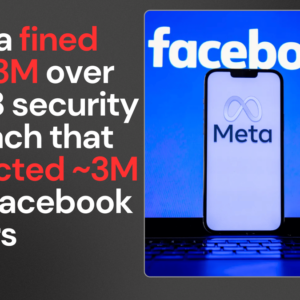Imagine if you could remind every customer who left your store to come back and finish their purchase. That’s what retargeting does! It’s like a second chance to make a lasting impression on potential customers who showed interest in your products but didn’t convert. In this blog post, we’ll explore the ins and outs of retargeting ads, why they are crucial for your marketing success, and how you can implement them effectively.
What is Retargeting?
Retargeting is a digital marketing strategy that helps reconnect with users who have previously interacted with your brand but didn’t complete a desired action, like making a purchase.
Retargeting vs. Re-engagement
While both strategies aim to bring back customers, they focus on different groups:
- Retargeting: Targets users who visited your site or engaged with your ads but left without converting.
- Re-engagement: Aims to win back inactive customers who have previously interacted with your brand but haven’t returned in a while.
Why Retargeting Ads Matter
Retargeting ads are essential for several reasons:
- Increased Conversions: Studies show that retargeted ads can lead to conversion rates that are significantly higher than standard ads. For instance, consumers are three times more likely to click on a retargeted ad compared to one from an unfamiliar brand.
- Better ROI: Retargeting campaigns often yield a higher return on investment (ROI) because they focus on users already familiar with your brand. This familiarity increases the chances of conversion.
- Improved Customer Retention: By reminding potential customers about their previous interactions, retargeting helps keep your brand top-of-mind, encouraging repeat visits and purchases.
Examples of Retargeting Audiences
Understanding who you can retarget is crucial for crafting effective campaigns. Here are some examples:
- Users who abandoned their shopping carts without completing the purchase.
- Visitors who viewed specific product pages but left without buying.
- Individuals who clicked on an ad but didn’t follow through to the landing page.

How Retargeting Works
Retargeting utilizes various platforms and tools to reach audiences effectively:
Platforms for Retargeting
- Facebook Ads: Create custom audiences based on user interactions with your website or app.
- Google Ads: Use display ads to reach users across the web after they visit your site.
- Email Campaigns: Send targeted emails to users who showed interest but didn’t convert.
Tools for Marketers
To implement successful retargeting campaigns, marketers can use tools such as:
- Google Analytics: Track user behavior and segment audiences based on their actions.
- AdRoll: A platform that helps manage retargeting across multiple channels.
- Pixel Tracking: A small piece of code placed on your website that collects data about visitors, allowing you to serve personalized ads later.
Real-Life Success Stories
Many businesses have seen significant success through retargeting. For example:
- Myfix Cycles combined Google Ads with Facebook retargeting and achieved over $3,000 in revenue from just a $200 ad spend, demonstrating an impressive return on investment.
- Watchfinder, a luxury watch retailer, reported a 1,300% ROI by targeting users who showed intent to purchase but hadn’t completed their transactions.
These examples highlight how effective retargeting can be when executed correctly.
Now that you understand the importance of retargeting ads, it’s time to take action! Start building those bridges today, and watch your conversions soar!
Conclusion
Retargeting ads are a powerful tool in digital marketing that can help re-engage your audience and drive conversions. By focusing on users who have already shown interest in your products or services, you increase the likelihood of turning them into loyal customers.
Incorporate retargeting strategies into your marketing plan today and experience the benefits firsthand!












